a true adventure
sailing to ski in the fjords of british columbia
Words by Captain Ben Doerr
Photos by Andy Cochrane
Four years ago, over a couple beers at the pub, I hatched a plan for an epic backcountry ski expedition with my dear friend and lifelong outdoorsman, Andy Cochrane. We called it Sail2Ski, an idea based on the Nordic concept of using a sailboat to reach wild, untouched ski terrain. We set our sights on the fjords of British Columbia and, just a few months later, set our skis to snow in remote reaches only accessible by water.
In April of this year, Andy and I set out to repeat that trip with five other willing souls. We wanted to recreate the highs and lows—the hardships and unknowns that are key ingredients to adventure. The journey needn’t be extreme or dangerous, just challenging enough to push us out of our comfort zone and remind us of our capabilities. I had no idea, however, that I’d be setting sail into the most relentless conditions I’d ever experienced; or that the biggest challenge of the expedition would be an internal struggle with self-worth.
Our goal was to sail 185 nautical miles north, from Port Townsend, Washington, to Princess Louisa Inlet in British Columbia. At Princess Louisa Inlet, we’d pack the necessary gear and skis on our backs and climb 4,000 feet through dense, temperate, coastal rainforest. Once we reached snow, we planned to build a base camp, put climbing skins on our skis, and climb until we felt like ripping the skins off and skiing downhill. We had nine days to complete the journey, including six days of sailing —a tight schedule by any measure.
On April 15, I woke up at home on Bainbridge Island, celebrated my son’s 12th birthday and caught a ride to Port Townsend, where my good ship, TRUE, awaited us. TRUE is a familiar sight throughout Bainbridge Island and is the flagship of my sailing charter company, Sail Bainbridge.
That afternoon, which was forebodingly dismal, cold and windy, the other six members of the crew arrived and settled onto the boat. Most had traveled from out of state, including two who flew in. Of the six, two had been on the boat before and one had some sailing experience. The rest joined partly because they’re incredible skiers and snowboarders, partly because they know how to adventure big and mostly because they’re incredible humans. With hundreds of miles to sail and a narrow window in which to do it, we were eager to set off.
Except we couldn’t. We awoke the next morning to a howling gale—over 35 knots of sustained wind and ugly seas. There are two major geographic hurdles to this trip—the Strait of Juan de Fuca and the Strait of Georgia. Both are large bodies of water that can stir up impassable conditions. We were delayed from setting sail by conditions at the first strait, using up some of our precious, built-in weather buffer—but this was a minor setback compared to what lay ahead.
By early afternoon, we sailed out of Port Townsend with winds down to 25 knots at our back. Halfway across the Strait of Juan de Fuca—where the Pacific Ocean comes barreling into the inland waters of British Columbia and Washington—the sea state thickened. The winds shifted to the west, and the waves, getting sloshy at six to eight feet, hit us from the side. I had the pleasure of sailing in 40 knots of wind for the first time in my career, and I’d be lying if I told you I was relaxed. In those conditions, my heightened awareness of crew and vessel safety was fully engaged. But I trusted my vessel and the work I’d put into her over the previous eight years, and she performed brilliantly. It wasn’t long before we tucked into the safety and relative comfort of the San Juan Islands and picked our way north.
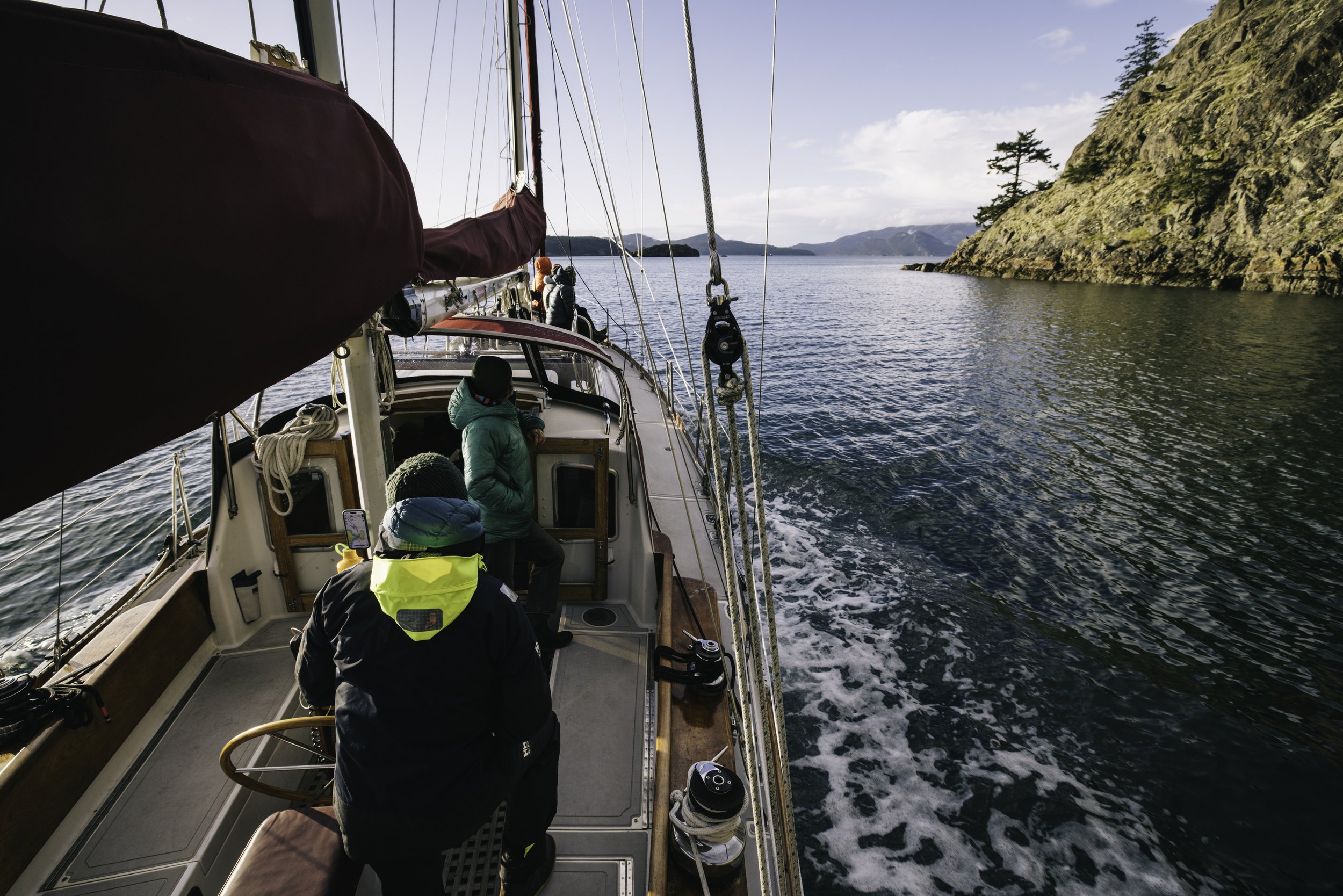
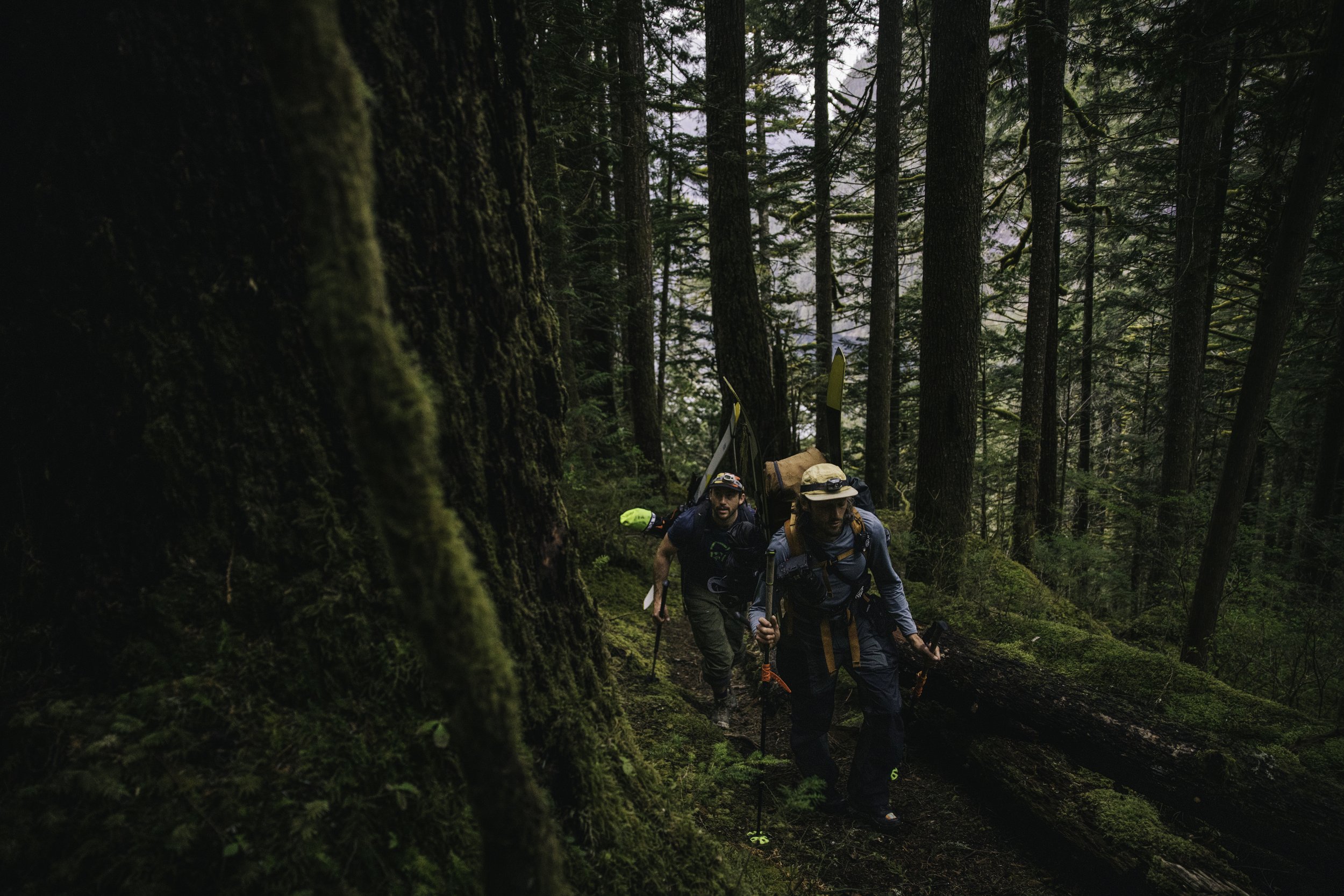




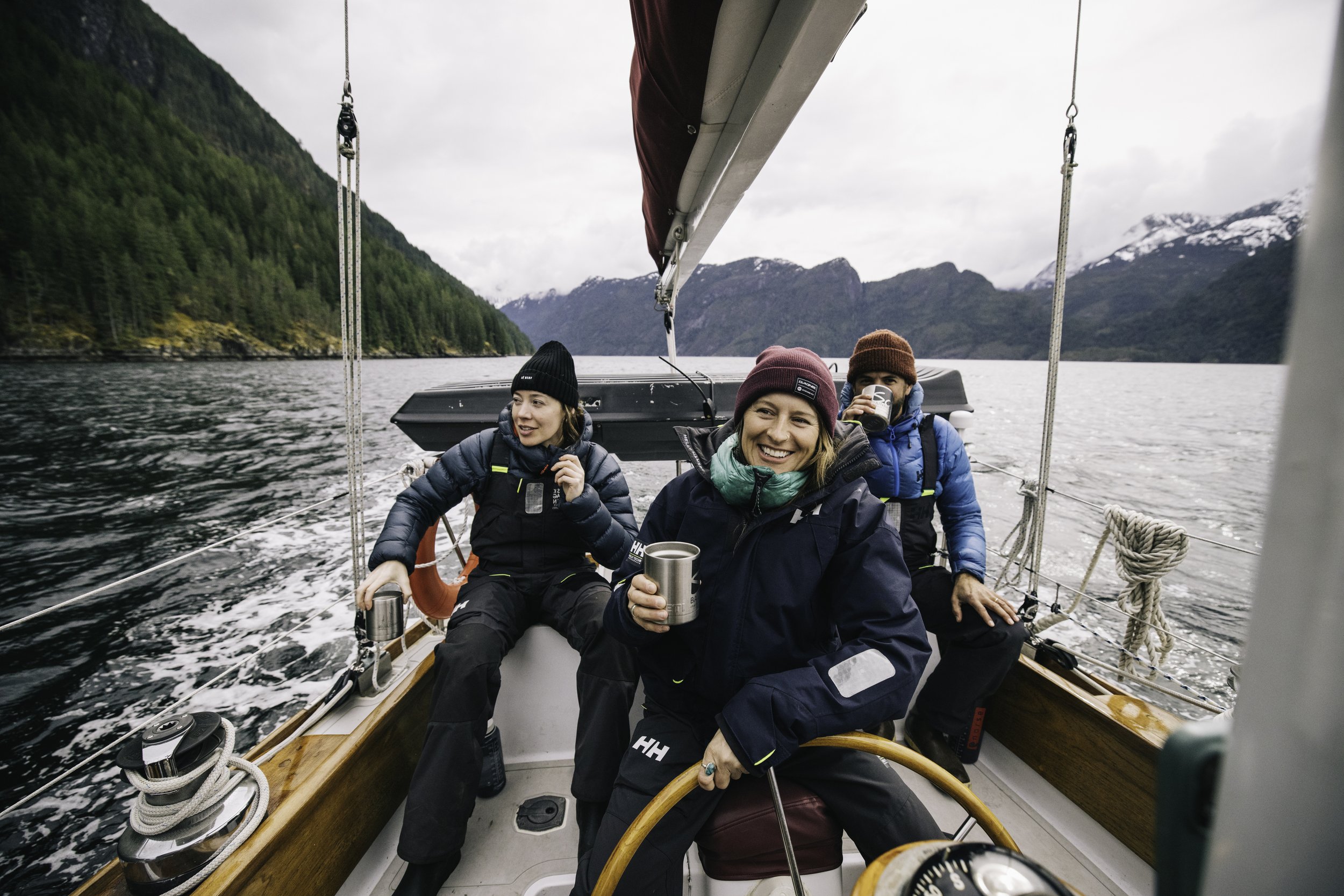
Day two saw us across the Canadian border and into the assumed protection of the Gulf Islands, where instead of protection, we experienced the roughest conditions I’ve ever seen in this region, or anywhere, for that matter, throughout over 5,000 miles of ocean passages. Winds reached the upper 30-knot range, gusting to 40, while steep, eight-foot waves slammed into the boat. As each wave approached, howling wind sheared off its top, sending torrents of water over the entire length of the boat. Nevertheless, we continued to inch our way toward the Strait of Georgia, finding refuge in small, deeply charming coves of the Canadian Gulf Islands and finally within a tucked-away hamlet called Silva Bay on Gabriola Island.
If I had to choose between sitting at anchor, feeling anxious and bored, or sailing out into big conditions, feeling anxious and overwhelmed, I’m honestly not sure which I’d prefer. But that day, the conditions gave us no choice. The wind blew over 60 knots in the Strait of Georgia, canceling all B.C. ferry routes and grounding seaplane flights. At times, TRUE leaned over 15 degrees on her dock lines, even in the cover of Silva Bay.
The extreme weather pinned us in Silva Bay for three days. Every morning, we woke up hopeful, only to find the harsh conditions persisting or worsening. We struggled to fend off boredom and frustration, but all the way through, our crew chose to lean in, get closer, dig deeper and become more vulnerable with each other. We shared much about our personal lives. We fell into a trust and a love that is really only possible under these rare conditions and forged brilliant, magical friendships.
Illustration by Mary Jo Davis
By the last day in Silva Bay, we questioned whether the entire objective of our expedition was slipping away. The battle between my personal goals and my professional responsibilities became exhausting. Self-doubt began creeping in from every angle. Could a more capable captain get us there? Was I being too conservative with the weather? Had the big conditions we’d already experienced inspired or shaken my confidence? I wasn’t sure.
We finally got our break in the weather on day five. But with 12 hours of sailing ahead of us that day, plus our return days, we had run out of time for skiing. I asked the crew what they wanted to do. Each very focused and driven athlete on board decided they wanted to sail up the fjord to Princess Louisa Inlet, even if we couldn’t ski. For most of the crew, it was the chance of a lifetime just to see this remote and wild place that’s reachable only by boat. We agreed that continuing on just for the magic of the place was a worthy objective. I could have cried. As a group, the hardships had purified our objective. This was truly a dream team.
Sailing into the fjords of British Columbia is always an epic experience. The scale of it makes you feel physically insignificant and spiritually overflowing at once—the very definition of awe. Mountains rise out of the sea to towering, snow-capped peaks of over 7,000 feet. It’s a place that feels empty and wild. As soon as we arrived, energy buzzed through the crew. Toothy smiles and undeniable joy were a dead giveaway to a unanimous feeling. We agreed to extend the trip by a day. Before completely losing contact with the outside world, each of us quickly rebooked flights and made arrangements to go up the mountain in one big push the next day.
All my feelings of self-doubt and insecurity began to melt away. My objective as captain on these expeditions is never entirely about skiing; I know there’s no guarantee. My goal is to provide the team with the opportunity to ski safely. Motor-sailing up the quiet and calm fjord, a clarity settled on my mind. I had made good decisions. My seamanship— the skills and decision-making of running a vessel—had kept my team safe, even when there was pressure to keep moving. And the crew had been amazingly supportive through the whole process.
And yes, we went up the mountain—a crazy challenge of its own. We climbed 6,000 feet in one day, through thick, wet forest to reach some of the worst snow I’ve ever laid skis on. But every step filled us with gratitude. At every turn, our laughter accompanied enormous views.
This trip was a true adventure—each day presented us with a new challenge. But the more I learn about teamwork in the expedition setting, the more I understand that the heart of a journey isn’t out in the wild. It is and always will be a journey inward, toward a deeper understanding and trust of ourselves and each other.
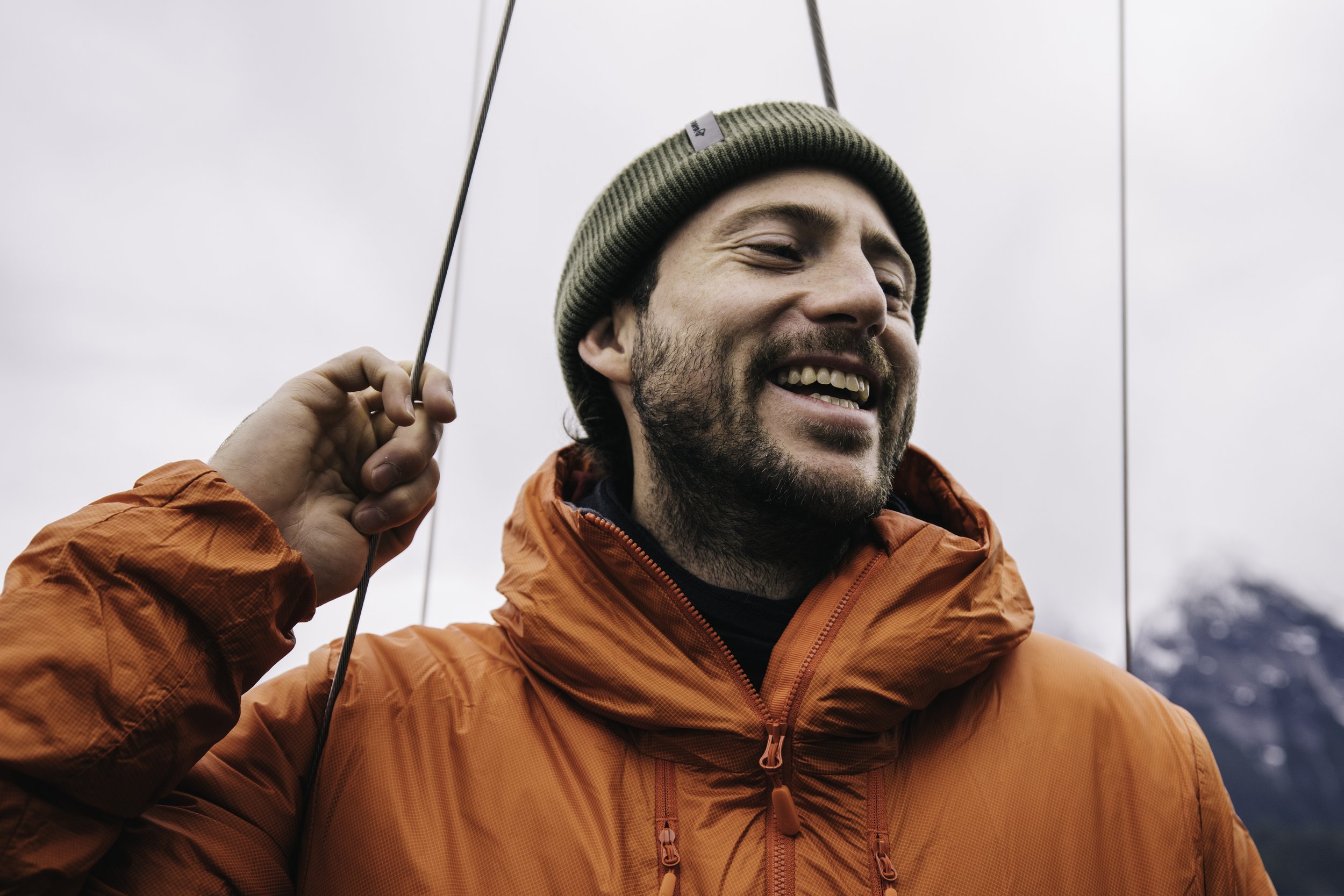
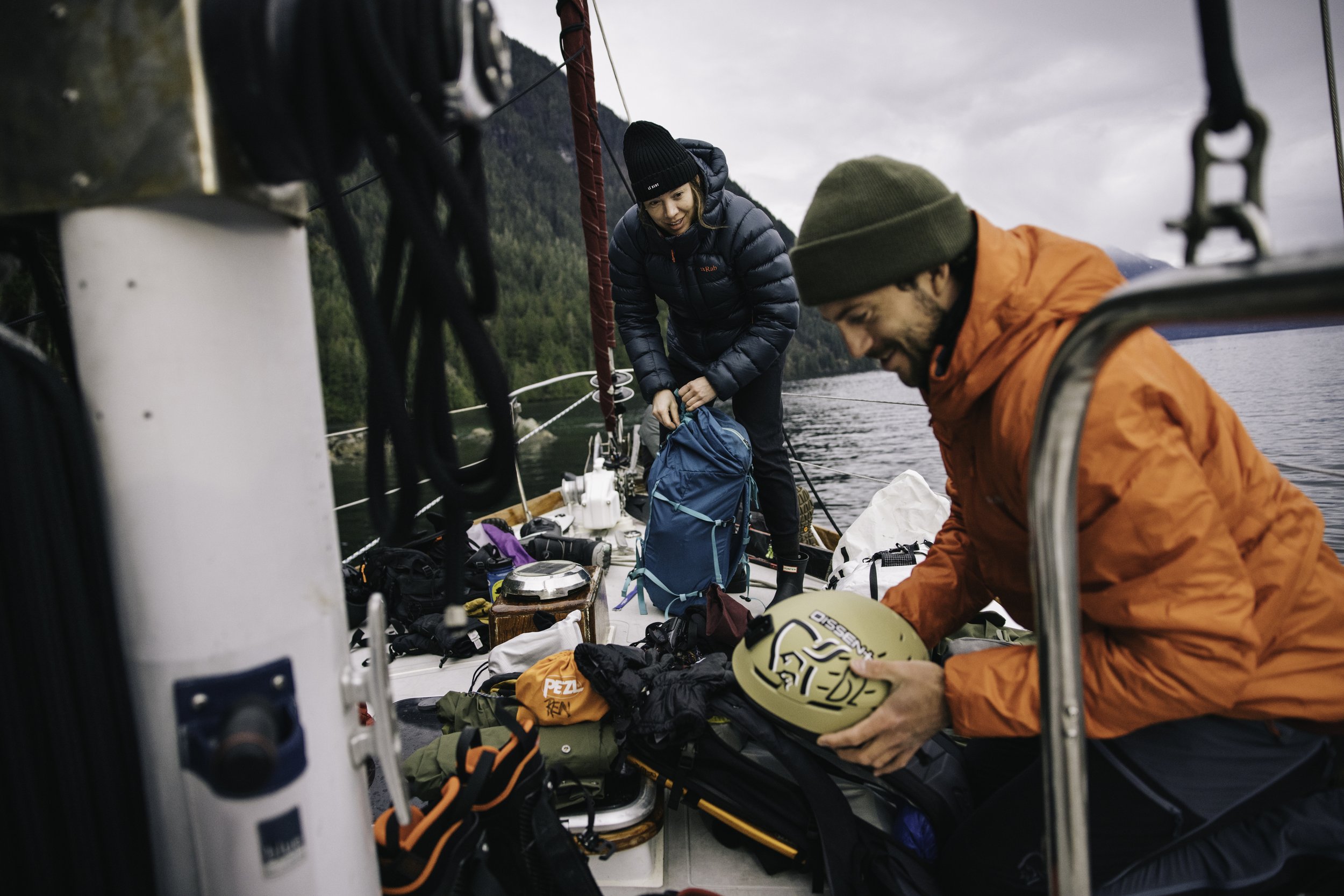

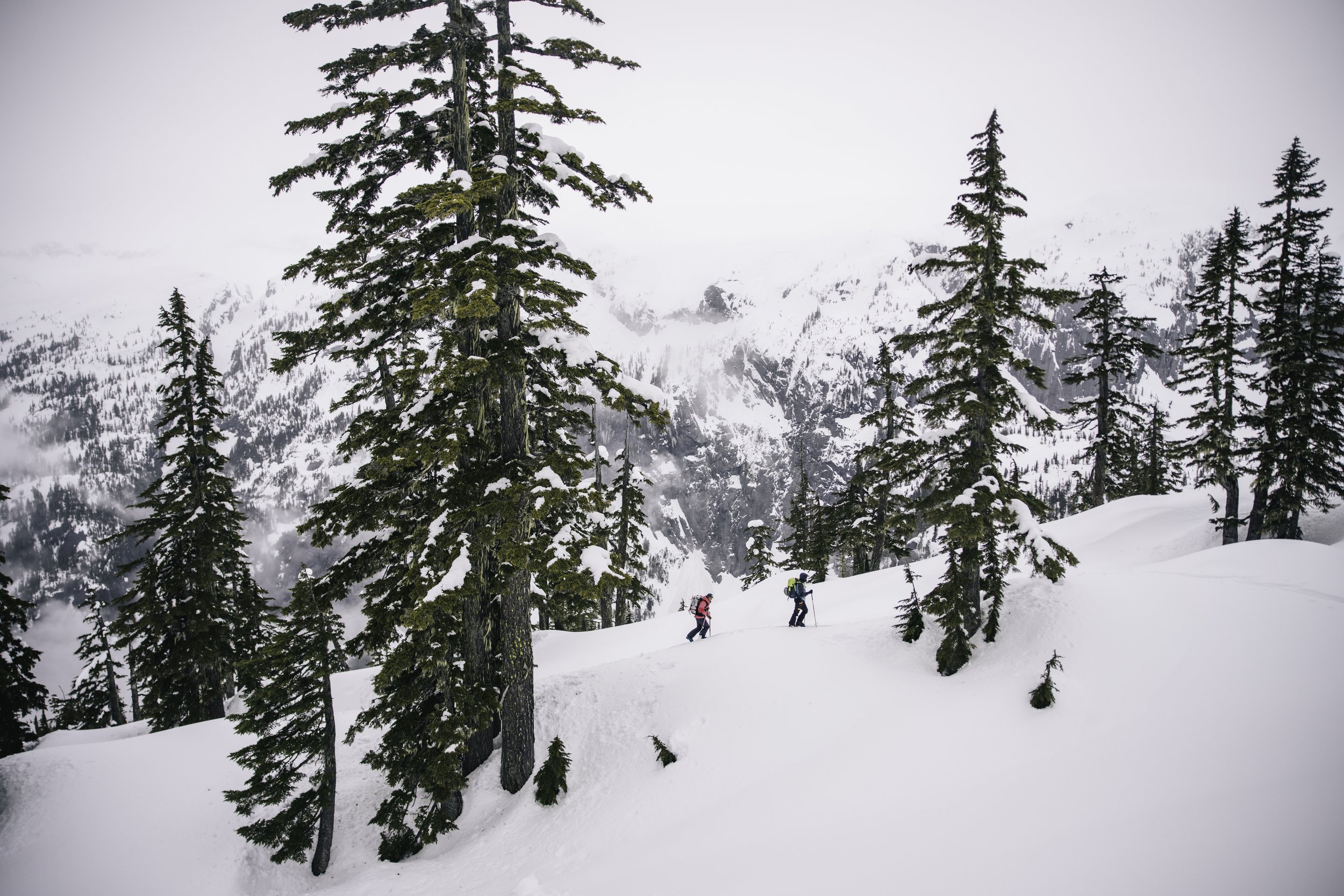
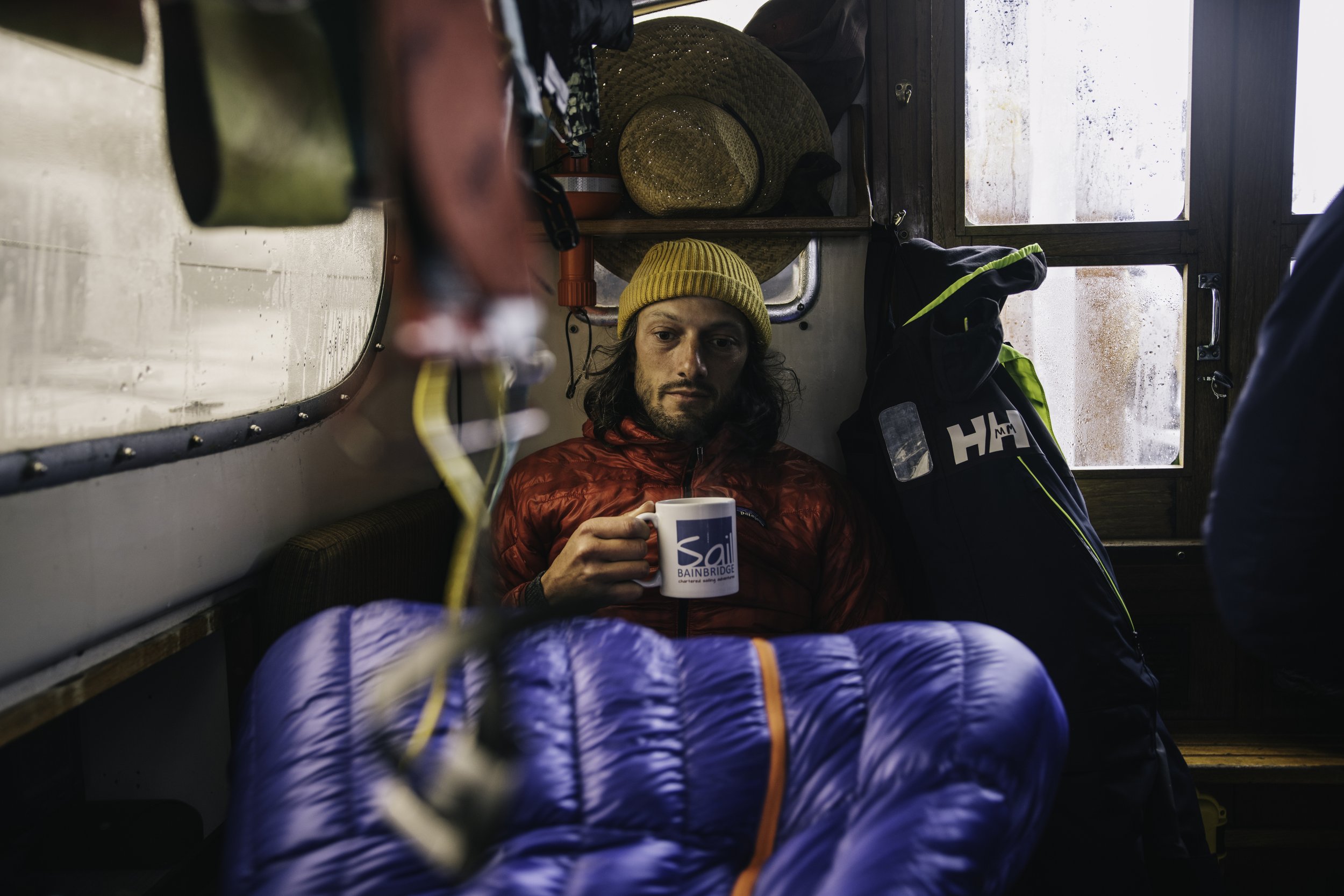
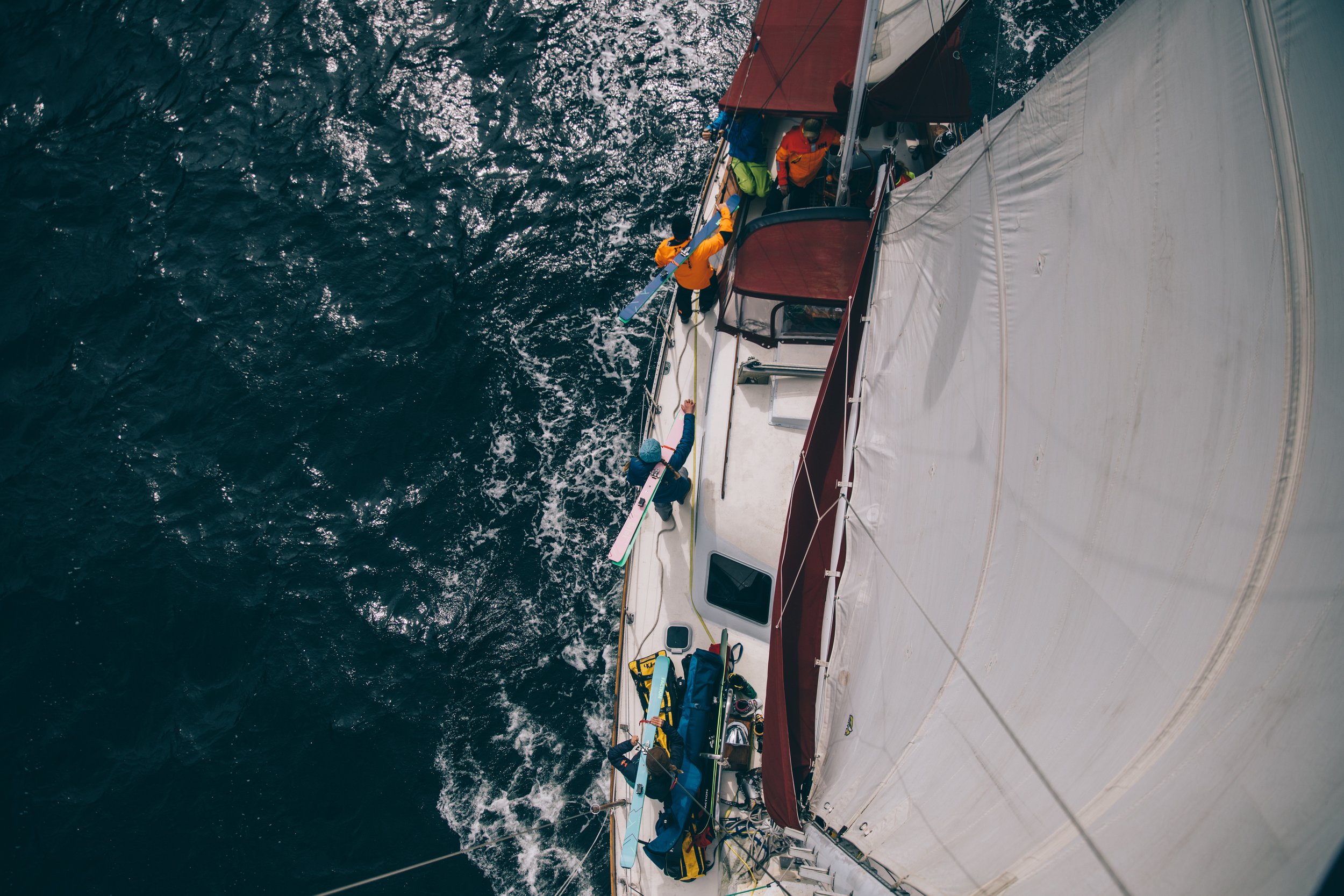

Sail2Ski is working on new and exciting locations for Spring 2024. To stay tuned, join the mailing list at: sail2ski.com


